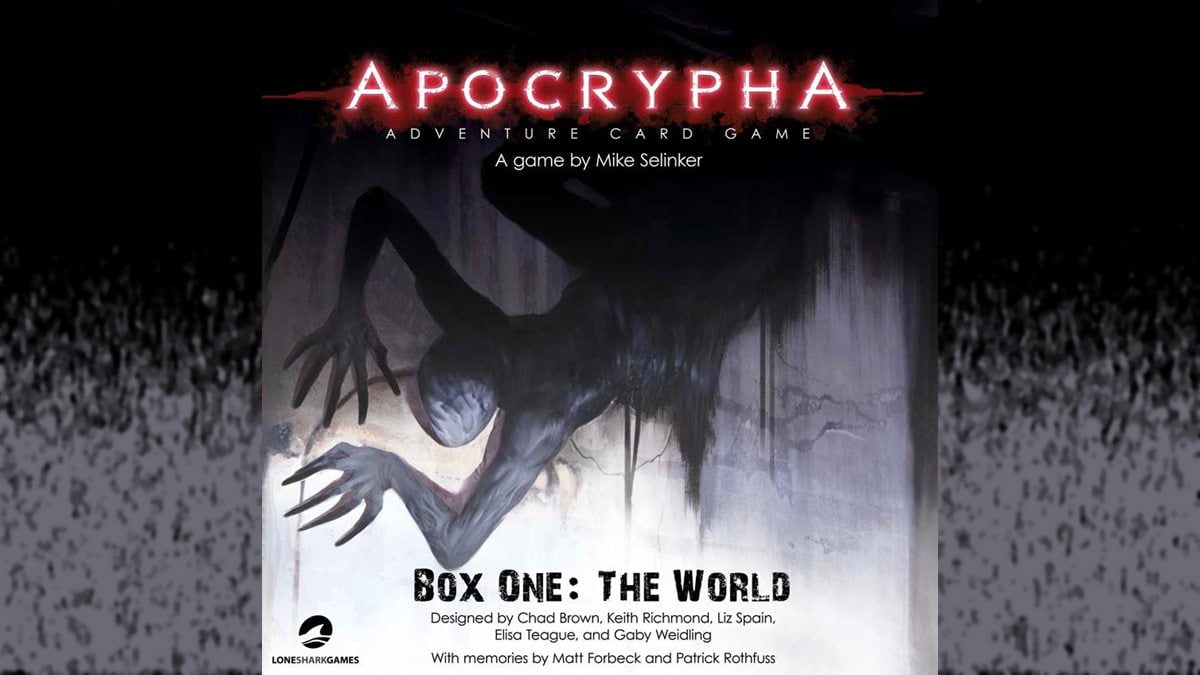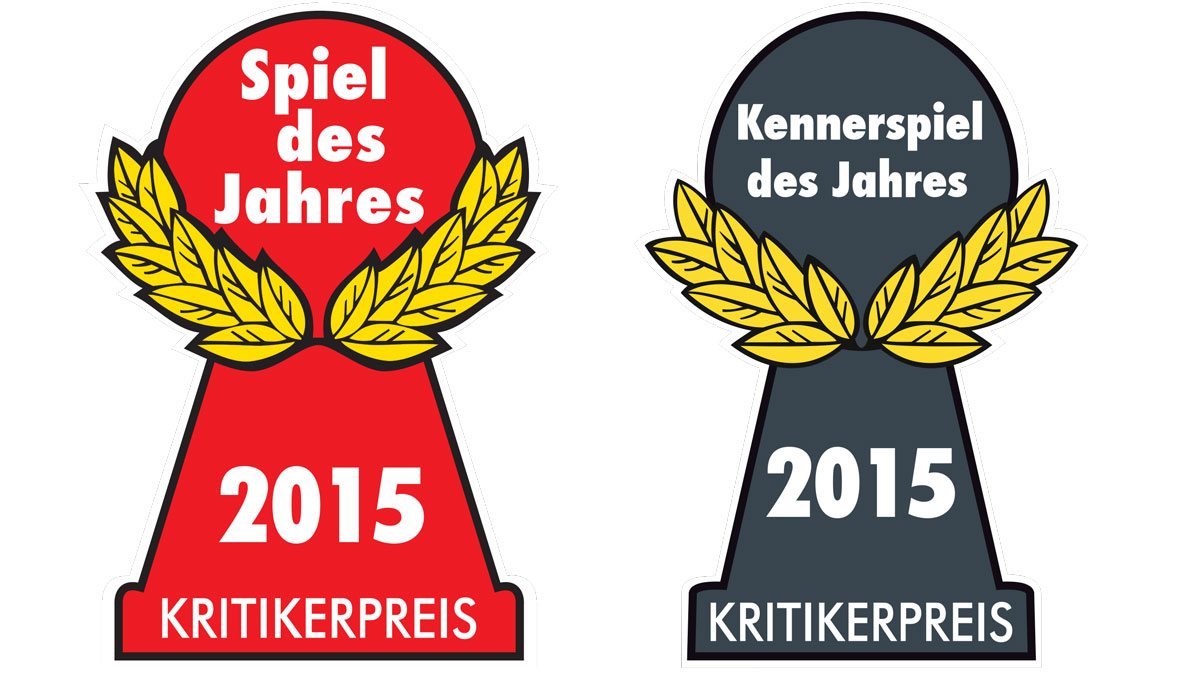MERCS is a fast-paced miniatures skirmish game set in a future that is run by global corporations known as MegaCons — with a wide variety of team options and amazing miniature sculptures based on the game art of creative designer Keith Lowe. Each MegaCon has at it’s disposal it’s own well-funded and highly trained rapid deployment team of mercenaries known as MERCS. The various interest groups (known as Factions) within the game has a well-balanced team of specialists to choose from.
I had the opportunity to play a demo of the MERCS miniatures small squad skirmish game at PAX East, and I was sent home with two factions in order to get a better feel for the game. Although there are nine different factions currently available, I went home with the North American CCC faction and the Russian USCR faction (West vs. East, a classic match-up). I’ve now played over two dozen games, and I’m still picking up on nuances of game strategy. There are three other friends of mine that have picked up factions of their own since returning from PAX with a new favorite skirmish game.
Games are won based on what victory conditions you set. Number of casualties, rescue the downed pilot, or command and control of various strategic points on the game board. The variations on win-conditions is only limited by the imagination of you and your opponent. I found a lot of great community support on the web for scenarios and game ideas.
Limited Investment:
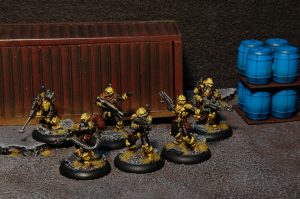
Each faction has 6 to 7 models available in total. The starter set comes with the basic six models, and most of the bundles now offer the 7th bonus character model. I was really surprised when the starter pack came with laminated game cards, a full set of dice (six 10-sided dice), and six detailed metal-cast miniatures (assembly is required).
Quick Play:
I get to play MERCS roughly once a week over my lunch hour at the office with some fellow geeky co-workers (yeah, playing games at lunch — it’s a hard gig). This miniatures game does not have an assigned point value per model like other games when it comes to setting the size and scale of a game. For a standard size game each player will select 5 character models to bring. You have a lot of missions to choose from, and even more available on the internet from within the MERCS community.
The standard game will be 60-90 minutes in length, and this is once you have the rules down. The first few full-size games took a little over two hours once you mix the advanced rules in, as they add in some fantastic interactions. The smaller game is done by selecting 3 character models per side, and I find that these games run 35-50 minutes on average.
Unique Movement and Cover:
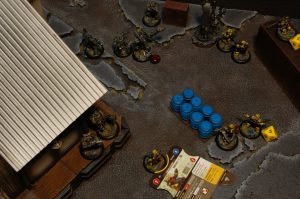
As a veteran of multiple wargaming systems I was skeptical of movement system used by MERCS. It does not use a tape measure like many of the systems on the market. It instead uses the cards provided for each of the models as the measuring implement as well as a very simple mechanic called Snap To Cover. Snapping to cover lets you move one model base length for free each turn as long as you are within a base length to cover or another model. As for card-based movement, each model comes with a card that has the stats for that character on it along with the appropriate die-cut half-circles. These are the perfect size to fit the bases of the models on it, which allows a player to see how far each can move. Each model has a Movement Point (MP) characteristic and can move a single card length for each MP spent on movement during that models activation. Since you can’t move through your friendly models or through cover, it adds a level of movement strategy that has really grown on me. Like in real life, marching order matters and so does taking appropriate cover against being attacked with ranged weapons (like Nerf darts and snowballs).
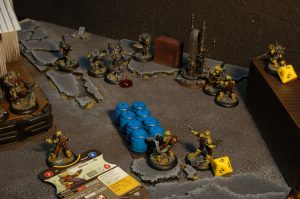
Combine the card movement with the no-nonsense cover mechanics and you get a simple rule system that eliminates most of the confusion around who gets cover. This is a mechanic that plagues many other games and requires you to determine whether a model has 25% cover, 50% cover, or determine how many models in a squad are in or around cover. MERCS avoids a lot of the arguments by limiting the options into simple and easy to determine conditions. A model is either in No-Cover (not any part of the model is obscured) or models that find themselves obscured in any way would be considered In-Cover. The third type of cover is Full-Cover, which means nothing can be seen (including gun barrels and even the smallest part of the model). You have a bonus to hit an enemy out of cover, a penalty to hit those in cover, and a much larger penalty for those with full cover (when hurling a grenade or firing an area of effect weapon that does not require line of sight).
Each faction has various mechanics for dealing with cover to make this more interesting. One faction called Kemvar wears armor with integrated digital camouflage (much like in the Predator movies) that considers them to always be in cover while the armor is in working order (armor has a nasty habit of breaking or malfunctioning when you get hit). Other factions and individual MERCS models have a variety of special abilities to augment their cover or diminish their opponents cover value.
The Basic Rules and Turn Order:
The rules are easy to learn, although getting a single demo from an experienced player can get you up to speed within 10 minutes. I really like how fluid the game runs as players go back and forth activating each model. The MERCS initiative system is my single favorite aspect of the game. It has each player roll a single 10-sided die (d10) for each model in their faction, setting the die next to the model or next to the character card as a reminder of who goes when. Players activate the models with the highest initiative score each turn and use the models Reaction-modifier as the inevitable tie-breaker. So all of the initiatives of 10 take their action first and the players work all the way down to initiative of 1 until all of the models have acted at which point you roll initiative all over again for the next turn. Some turns may have you activating all of your models first (which can be a devastating round of shooting if enemies are in range) or just as likely your initiative rolls are all over the place and your models get shot up before they can get to their game-winning action. Each game is different, and knowing when to take advantage of your initiative order to move or shoot really makes it very dynamic gameplay. You cannot just take your entire turn and walk away to get a soda with this game — you and your opponent will be very engaged in the gameplay as each turn has you alternating between the models actions on the board.
Basic Combat:
You roll to hit using a number of modifiers based on things like elevation, cover, and distance (being within 1 card length gives a bonus for short-range). If you hit the enemy, you make a roll to see if you break the opponents armor (if they have any) and cause damage in the form of “blood” (which is the hit point mechanic). Do enough damage to an opponent model and they are removed as a casualty. I recommend focusing your fire on an enemy MERC with your entire faction until they are dead. Seems to be the best tactic thus far.
Advanced Rules:
My first few games were limited to using just the basic rules of the game. The rulebook recommends only using the basic rules until you are familiar with all of the basics. The gameplay was pretty static and felt a bit stale using just the basic rules, and it wasn’t until we added in the 3 advanced rules that we realized how much fun this game was. Overwatch-Fire lets an individual MERC declare on their initiative step that until their next activation they get to take a free pot-shot at any enemy model that attempts to move or shoot within their line of sight. Suppression-Fire is a similar action but, instead of trying to wound enemies when they perform actions, if you have a model within line of sight of an enemy model, they need to pass a “Courage” test to do anything at all as the MERC is laying down suppressive fire on anything moving. These are two similar actions with very different game-changing results. The last of the advanced rules is called Bounding. This is a mechanic that allows you to change up the initiative order a little bit. When your MERC with a high initiative roll needs to delay their action they can choose to Bound forward when another friendly model that has not yet acted. This allows you to coordinate movements and move MERCS together and prevent them from getting stranded on their own, create human shields, and take force opponents to move out of cover first before popping around the corner with an assault rifle.
The Models:
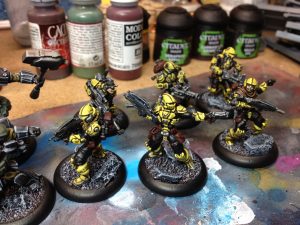
I’ve collected a lot of models in my day, and the poses, sculpts, and details are amazing with what you get with MERCS. I paint a lot of miniatures, and these were fantastic additions to my modern and sci-fi collections. My biggest compliment is that these models are proportional human beings. They don’t have huge ham-fists, ridiculous sized gun barrels, and they are in very natural poses. Heavy things look like they are heavy. My biggest complaint is that these models are proportional human beings. Yeah, strange right? The problem with arms, hands, and wrists that are an appropriate size means assembling the models leaves very little in the way of “glue points.” To properly assemble these metal models I had to use my pin-vise and piano wire, an old modeling technique called pinning that you can find on YouTube.

If you like playing your miniature games with great looking models, MERCS really fits the bill. Just make sure you have the patience to assemble them properly. There are some very fine details like gun barrels and diminutive hands that could get bent up pretty bad if your not careful during assembly.
Conclusion:
I’m a fan of the MERCS game and appreciate the smaller investment it represents in both time and money in comparison to other games I play. It is a solid casual game and is less all-consuming than my usual miniature wargames like Warhammer or Warmachine/Hordes. The replay value over the course of multiple games is quite high and it has enough unique game mechanics to keep it from becoming stale or too similar to other skirmish games that I’ve played. My best advice is to think of this more like a tactical board game because it doesn’t create the need for you to be constantly buying new stuff to add to your collection or a constant stream of new rules that you need to keep on top of. If you or some friends are looking for a gateway-game into miniature games this is a great place to start. Pick up a few factions and a rulebook between some friends, and you”ll have a wide variety of squad combinations, scenarios, and many hours of enjoyment on a game night (or a lunch hour). Protip: For those that own sci-fi models or modern models, you can download the basic rules on the website and the faction cards and give it a try-before-you-buy approach. As a matter of fact, some of the Reaper Bones science fiction soldier miniatures (IMEF Marines from the Kickstarter) are pretty much dead-wringers for the CCC faction. I recommend giving it a look, and if you like it support the folks at MERCS Miniatures.


